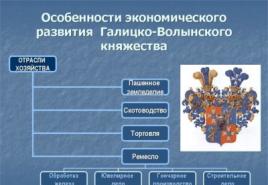Who is Hiroshi Ishiguro? A Japanese scientist created a robot instead of himself Hiroshi Ishiguro childhood years.
The head of the Osaka University Robotics Laboratory, Professor Hiroshi Ishiguro, recently came to Moscow to speak at the TEDx Park Kultury Human 2112 conference. Ishiguro managed to get closer to creating an interactive robot that completely copies human behavior. His robots play in the theater, talk and even give lectures. According to Ishiguro, it will be impossible to imagine life without androids in the metropolis of the 21st century: in the future, they will be able to replace a person in almost all areas of activity. In an interview with The Village, Ishiguro spoke about exactly where the new technologies will be used, why robots should be anthropomorphic, and how the city will change in the next decade.
ROBOTS OF ISHIGURO HIROSHI
ABOUT GEMINOIDS
|
We will no longer be able to stop in technical development. At all stages of civilization, people have improved technology to make life easier for themselves. Washing dishes, cleaning - this is not a human job, and robots should do it. Now we have dishwashers and washing machines, but the human brain is best equipped to interact with human beings. And even small children and the elderly will be able to work with the robot. So far, my project is unique, but large companies are seriously interested in my developments and, moreover, are already ready to implement these technologies in life. The first commercial application of my robots is in shop windows. For example, we had one shop window in Tokyo for Valentine's Day: the Geminoid F robot sat in the window and waited for a call from her handsome prince. We want to open a similar showcase in Hong Kong in the near future. |
The main goal of Osaka University Robotics Lab is to understand people. |
ABOUT COMPETITION WITH PEOPLE
|
Robots can do jobs that don't require humans. And I mean not only purely technical things, such as cleaning or working in factories - robots will be able to read the news on television, teach children at school. Yes, I believe that human teachers are not needed. The task of the teacher is to convey information, and the computer will do it better than a person. Multimedia technologies allow you to more successfully absorb information. And motivation also does not come from teachers, it appears in a person when communicating with friends: he wants to be better than his comrades. |
Ishiguro and his geminoid clone starred in an action movie in 2009 "Surrogates" |
I am also sure that the entertainment industry will change in the future: robots, for example, will be able to play in the theater. I am convinced that they will be able to portray human emotions better than the person himself. After all, human capabilities are limited, but technology development opportunities are not. Geminoid F played a small role in the theater successfully.


Robots will be created even for sex. The Internet has become so popular because you can find porn there. 70% of search queries are related to sex. People spend millions and a huge amount of time to find a partner. And I'm not sure that everyone is looking for a person who will love them. I personally don't. So, of course, robots for sex will appear. I myself do not develop these and do not intend to, but I think there will be craftsmen.
ABOUT THE FUTURE OF CITIES
|
I cannot say that everything I am talking about will appear, but it is clear that machines will increasingly enter our lives. They will change the city: driverless transport, electronic merchants, musicians, actors... How soon can this happen? To answer this question, just remember how long it took for the mobile phone to penetrate our lives. Three years maximum! The same was true for computers and the Internet. Just imagine, our life has completely changed in three years. And it will be the same with robots. It is a matter of five, maximum ten years. |
Ishiguro is the author of more than 300 publications and books |
What will people do? Anything, but I don't think there will be a problem of unemployment. To be honest, I don't think about it at all. The task of a scientist is to develop technologies, and how to use them is up to the public to decide, for this they hold round tables, expert councils, and so on. You know, the nuclear scientists gave us nuclear power plants and the nuclear bomb, but it's not the scientists who are to blame for using this bomb to harm people.
I don't model the future, I'm not God. My task is simple - to understand myself and humanity, this is what I try to do with the help of my research. I don’t think about what the world of the future will look like, I don’t build an ideal picture so as not to be disappointed later, I just do my job, for which I get paid. In fact, no one knows what will happen there - we just develop technologies.
ABOUT OFFICIALS
It will take two hundred or even three hundred years before a robot can become the mayor of any city. There will also be more robots in the government, in the authorities. You have many officials, and most of them do nothing - they just take money. This must be stopped. Here in Japan, for example, passport control at the border is carried out automatically, but here I have seen hundreds of people who perform primitive mechanical work. This should not be. At the same time, robots will not help you defeat corruption. To defeat her, you just need to expel the corrupt officials. There is no other way - this is not a question of technology, it is a question of the development of society.
ABOUT COMMUNICATION AND EMOTIONS
|
Will robots communicate with each other? In fact, my robots interact via the Internet, perform joint work and exchange information. Communication with people is also possible. My robot, for example, leads |
Career
In 1991 he defended his dissertation. Since 2003 he has been a professor at Osaka University. He heads a laboratory in which he creates robots that can coexist with people.
Awards
- Listed in One Hundred Living Geniuses (2007)
Write a review on the article "Hiroshi Ishiguro"
Notes
Links
see also
An excerpt characterizing Hiroshi Ishiguro
- Take two! give the rocha here! like this. Where are you going then?- Well, at once ... Yes, stop, guys! .. With a shout!
Everyone fell silent, and a soft, velvety pleasant voice sang a song. At the end of the third stanza, right at the end of the last sound, twenty voices cried out in unison: “Uuuu! Goes! Together! Come on, kids!..” But, despite the united efforts, the wattle fence did not move much, and heavy panting was heard in the established silence.
- Hey you, the sixth company! Damn, devils! Help ... we will also come in handy.
The sixth company of about twenty, walking to the village, joined the dragging; and the wattle fence, five sazhens long and a sazhen wide, bent, pressing and cutting the shoulders of the puffing soldiers, moved forward along the village street.
- Go, or something ... Fall, eka ... What have you become? That's it ... Cheerful, ugly curses did not stop.
- What's wrong? - suddenly I heard the commanding voice of a soldier who ran into the carriers.
- The Lord is here; in the hut the anaral himself, and you, devils, devils, swindlers. I'll! - shouted the sergeant major and with a swing hit the first soldier who turned up in the back. - Can't it be quiet?
The soldiers fell silent. The soldier, who had been hit by the sergeant-major, began, groaning, to wipe his face, which he had torn into blood when he stumbled upon the wattle fence.
“Look, damn it, how he fights!” I’ve already bloodied my whole face, ”he said in a timid whisper, when the sergeant-major walked away.
- You don't like Ali? said a laughing voice; and, moderating the sounds of the voices, the soldiers went on. Having got out of the village, they again spoke just as loudly, sprinkling the conversation with the same aimless curses.
In the hut, past which the soldiers were passing, the highest authorities gathered, and over tea there was a lively conversation about the past day and the proposed maneuvers of the future. It was supposed to make a flank march to the left, cut off the Viceroy and capture him.
When the soldiers dragged the wattle fence, the fires of the kitchens were already flaring up from different sides. Firewood crackled, snow melted, and the black shadows of the soldiers scurried back and forth across the entire occupied, trampled in the snow space.
Hiroshi Ishiguro is included in the World List of One Hundred Geniuses of Modernity. In 2005, a scientist created an android girl who replaced his secretary. Then - a robot actress who was able to play in the theater. And in 2006, the inventor became famous for developing a copy of himself, which he called Geminoid HI-1.
I am a professor, I teach at the university, and since then I can send a copy of the android to lecture instead of myself - anyway, almost no one will notice the substitution, - Ishiguro winks. The famous Japanese - the "father" of humanoid robots came to Moscow at the invitation of the Skolkovo Institute of Science and Technology (Skoltech) to give a lecture "Androids and our future life." The KP correspondent managed to personally communicate with the scientist.
Excuse me, now I can definitely be sure that I'm talking to Professor Ishiguro himself, and not his android copy? - the first thing I'm interested in just in case.
The inventor calmly holds out a double-sided business card with photographs: “Here on this side is me, the original, and on the back is my Geminoid HI-1. Similar?".
- Not that word!
My "colleague" not only lectures at home, but also visited with speeches abroad - in India, Norway and several other countries, - the scientist continues. - It is very comfortable. True, on the plane he travels not in human form, but disassembled, folded into a pair of suitcases. Can you imagine the feelings of customs officers when they see a human head in their luggage? But, seriously, as a rule, everyone knows that this is a scientific cargo, and there are no questions.
- Tell us about your latest, most recent work.
This is a robot copy of a well-known wealthy woman from China. She wants to become a singer, and I created a copy that can perfectly master the singing skills. And then the female prototype will be able to reap the fruits of glory.
- That is, your androids are more like entertainment for the rich?
Not at all. First, while these are not commercial projects, prototype people do not pay for them. Although, in principle, such an opportunity already exists - right now, if you wish, you can order me your copy - either as a joke, or seriously, the inventor offers.
I'm afraid I don't have enough money.
On average, the development and production of one android costs about 100 thousand dollars, Ishiguro clarifies. - But remember how exorbitantly expensive were the first cars, computers, mobile phones. And then the technologies moved into mass production, and previously unique technological innovations turned from luxury items into affordable items for everyone - many now have several cars and smartphones.
But these are vital things that we cannot do without. Is there an urgent need for humanoid robots for everyone?
Oh, they open wide horizons for us! I am sure that in the near future - literally in 10 years, most of us, just as we now own personal computers, will have personal humanoid robots. And life without them will no longer be possible to imagine - just as now we cannot imagine it without laptops and smartphones.
A well-known scientist, creator of geminoids and telenoids, head of the Osaka University Robotics Laboratory (Japan), Professor Hiroshi Ishiguro will visit the Skolkovo Institute of Science and Technology (Skoltech) and give two open lectures.
Professor Ishiguro will give lectures at Skoltech. Poster: skoltech
On May 14, from 14:00 to 15:30, Professor Ishiguro will give a lecture "Androids and our future life." On May 15, from 12:00 to 14:00, a lecture "Adaptation to radio-controlled anthropomorphic robots" will be held.
Hiroshi Ishiguro was born in 1964 and moved into robotics in the 1990s. In 1991, he received his PhD from the Graduate School of Engineering at Osaka University, then worked at the universities of Kyoto, California, Wakayama. In 2003, he became the head of the Osaka University Robotics Laboratory.
Hiroshi Ishiguro became widely known for his work in the field of creating "realistic" robots and speaking at numerous exhibitions and conferences. One of his most famous creations is his "double" - an interactive robot that almost completely copies human behavior and looks like Professor Ishiguro himself. The robots created by the scientist play in the theater, talk and even give lectures.
The android, created in the image and likeness of Professor Ishigura, appeared back in 2006 and was called Geminoid HI-1. This robot is so advanced that it can replace a professor in a teaching job at Osaka University - students do not immediately notice the substitution.
In 2009, Professor Ishiguro created the Geminoid F female robot, which can, for example, act as a secretary in an office or greet guests at the entrance to a restaurant. She smiles, looks at the interlocutor, blinks, talks. In 2010, through the efforts of Hiroshi Ishiguru, a “telenoid” appeared as tall as a child, and in 2011, an “elfoid” was released - a mini-robot that fits in the palm of your hand.
Hiroshi Ishiguro seeks to reveal the secrets of cognition, communication, perception. Do humanoid robots scare people and how to overcome this fear? Will androids be able to replace humans in uninteresting, non-creative jobs? What is a human and what is a robot? The professor raises these and many other questions in his writings.
In his lecture at Skoltech, Professor Ishiguro, one of the pioneers in the study of interactive robots, will touch on an important topic: what awaits us in the near future with the penetration of robots into our society. The professor will talk about the possibilities of the robotic world and introduce the audience to androids, which will soon penetrate into many areas of our lives.
Hiroshi Ishiguro (石黒浩) is one of the founders of robotics in general and android building in particular. He is the director of the Intelligent Robotics Laboratory, which is part of the Graduate School of Engineering Science, Osaka University, Japan. One of the main areas of scientific research at Osaka University is the development of androids, robots that are similar to people both in appearance and in behavior.
Hiroshi Ishiguro believes that when developing robots, along with the development of algorithms for behavior and decision-making, no less attention should be paid to their appearance.
“I have created many robots and realized how important their appearance is. Human-like robots feel like they're alive."
He also made an android version of himself and named it Geminoid. Even put this androyd to lecture instead of himself at the institute. In addition, Dr. Ishiguro has been actively involved in projects such as: Repliee, Actroid, HRP-4C.
You can also see him in movies in such films as: Mechanical Love, Plug & Pray, Samsara.







